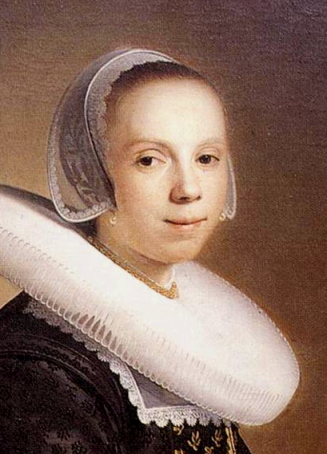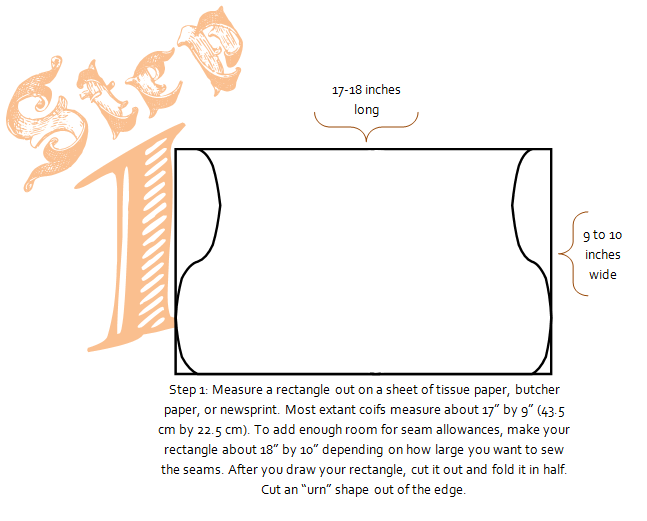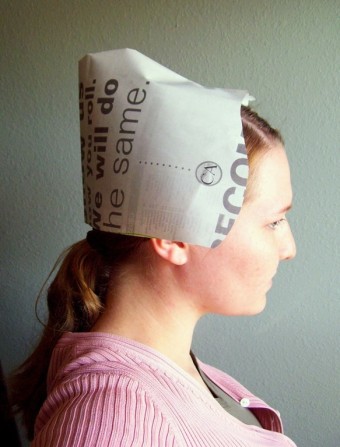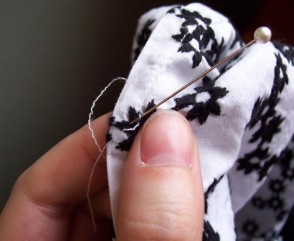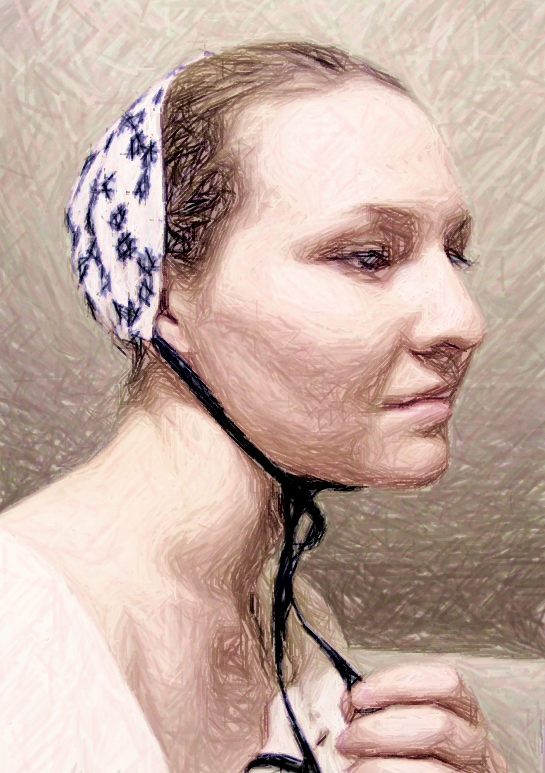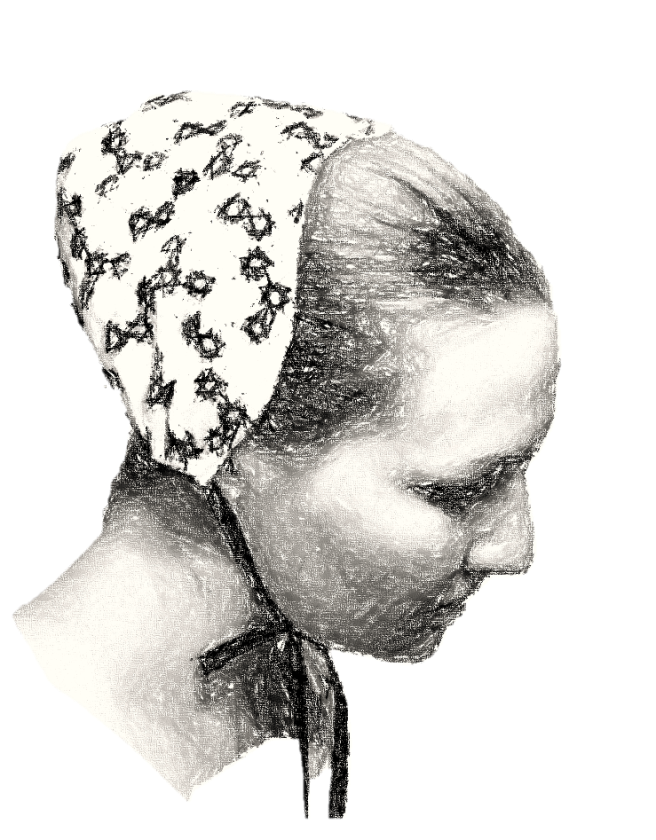“Scandaless” Undies!
Yes, there is a dress attached to those SLEEVES.
Well, I did it! I have finished sewing the pink polyester-whatever dress– which I have named “Mrs. Mauve”– and all that is left to do is trim it, figure out how to trick my hair into assuming a vaguely 1890s syle, and find some time to take photos!
Pragmatic anachronism at it’s finest!
I mentioned in my earlier posts that I was fitting this dress over improvised undergarments. I got a few questions about them, so I decided to use this as an opportunity to introduce one of my costuming staples. The corset I fitted my Mrs. Mauve dress over is my Orchard Corset CS-411. It’s a really comfortable, inexpensive underbust that, while not perfect for 1895 (underbusts came onto the scene around 1893, but weren’t common for daily wear until 1900), is a good option for Edwardian era costuming and an great companion for flouncy vintage dresses. For the Mrs. Mauve dress, I paired it with a underwire sports bra and a cotton tunic shirt for a chemise. Together, they helped hold the bust up to the proper place and prevented overtly modern jiggle.
CS-411 Corset Overview:
Price – averages $75 plus s&h
Fit – underbust to upper-hip, 10″ long
Shape – Hourglass curves
Pros:
Short length
Mobility
Doesn’t squish bust
Sturdy construction
Flattering shape
Comfortable
Fun fabric
Cons:
Laces too slick
Not enough curve
Bulky fabric

Company photo of Orchard Corset’s CS-411 in Black Pinstripe
Price and Fit
My underbust-to-lap measurement is 9-9.5 inches (depending on how much I slouch). The CS-411 is 10 inches in front and 8.5 inches on the side, making it just short enough for my torso. I do get a little extra “uplift” in the bust, especially when I sit down. It is one of the shorter ready-to-wear corsets on the market at the moment and one of the cheapest– most Orchard Corset styles average about $75 but are often offered on sale (O.C. recently added an even shorter cincher, the CS-201). Besides my pinstripe version, the CS-411 comes in a variety of fabrics, including satin, cotton, and brocade. The brocade and pinstripe corsets are thicker than the satin corsets, so they are very sturdy, but your outside measurement will be larger because of the added bulk. For example, even cinched fully closed, my 24 inch corset has an outside measurement of 27 inches. If outside measurements concern you, the satin is your best option. They also offer this style in breathable cotton, but I have not tried it yet.
Shape
According to Orchard Corset, the CS-411 is a Level 3 silhouette. Level 3s are the curviest corsets the company currently offers. I definitely get eye-catching curves, but I wouldn’t classify them as extreme. There is a 9 inch difference between the hips and waist on my corset which remains fairly constant through all Orchard Corset Level 3s. It is perfect for tubular and round body shapes. Pear shapes might find the hips a bit tight. Ladies with natural hourglass curves might be underwhelmed by the CS-411’s shape since it may closely mimic your own body, fitting to it instead of shaping it.
Pros
I really like this corset. Though I bought it primarily for costuming, I wear it as a modern accessory, too. I have worn it to Thanksgiving (and eaten in it without trouble) and to the mall. It goes wonderfully under vintage pieces as well, which I love. Compared to an overbust corset or a longline corset, it is very easy to move around in. Since it is an underbust, it doesn’t squish my bust down or give me “quad-boob” as many off-the-rack overbusts do, nor does it rub my underarms– a big issue I’ve had with corsets in the past. I also love that I can sit normally in it without the bottom edge jamming into my thighs. It’s great for my posture, too!
The pinstripe fabric I chose is a thicker poly fabric that has held up very well. When it is cold, the thick fabric gives me an excellent, warming hug! The construction of the corset is very nice quality; all Orchard Corsets are lined and have a waist tape, plus the CS-411 is double boned at each seam. The flexible spiral steels conform really well to my body and the cut of the corset gives a nice, swooping curve without rubbing my hips or ribs. It makes me feel very regal, but devious– always a good feeling to have in my book!
Cons
There are a few things about the CS-411 that bother me. The biggest gripe I have is that the laces the corset comes with are very stretchy and slick, so getting it to lace tightly is an exercise in futility unless you keep the tension very precise and constant when you are tying the laces. It also tends to loosen as you wear it, so even if I close it all the way and tie it tightly, half and hour later there will be a 1 inch gap in the back. Orchard corset does sell other laces, or you can re-lace it with something sturdier, but I wish they would just put good laces on the corset in the first place. The corsets are inexpensive enough that I would be able to afford, and would gladly pay, the extra $8 to have my corset come laced with good laces right out of the package.

As I discussed earlier, the CS-411 has really nice hourglass curves, but if you are particularly curvy yourself, you might not be as impressed with your transformation. The fabric I chose is very thick, so while my waist inside the corset is ~24 inches, my outside measurement is ~27. Buying a corset to achieve a “proper size” isn’t how you should go about buying one, but if you are concerned about a smooth fit under clothes, the thinner (but still strong) satin is probably a better choice because it won’t have as much bulk as the poly-brocades do. The brocade also takes longer to break in and doesn’t mold as readily to your body. I would definitely buy a satin or cotton version next time. I am considering their shorter CS-301 for my vintage gowns since the CS-411 has a difinitive line around the hips that shows when I wear it under close-fitting gowns and in pants (the CS-411 does just fine with fluffy dresses, though).
All in all, the CS-411 is a good corset for the money. For historical costuming, it works well for 1890-1912 (or earlier with a firm bra and a cavalier attutude towards pure authenticity). The CS-411 does its job, and would be a good corset for a beginner, stage performer, or casual wearer. I’d rate it a 3.5 out of 5.
I am not paid by Orchard Corsets to give reviews. I simply wear their corsets and thought that others might appriciate a review about their use in historical costuming (there are plenty of waist training and general reviews of this corset online if you are looking to wear this corset with modern clothing).
For more information on corsets, please visit Lucy’s Corsetry. She is one of the best modern-corsetry experts on the web and covers everything from drafting your own corset to corsetting health concerns.
(The wild skirt is an Indian belly dancing skirt that someone was using for swing dance before I got ahold of it and decided to use it as a tawdry Edwardian petticoat!)
Other Corset Reviews:







